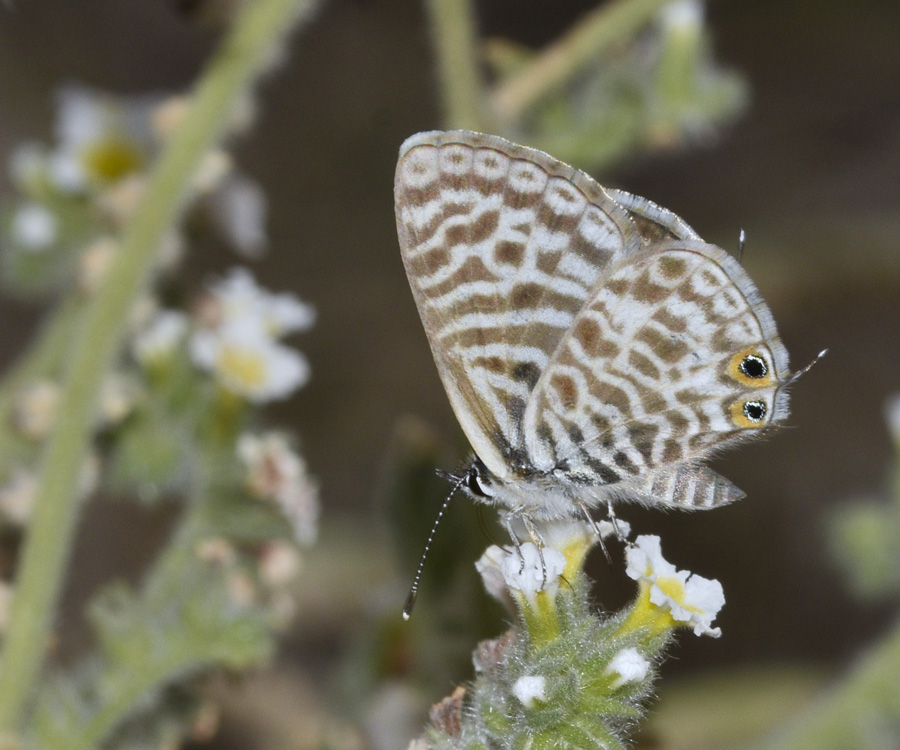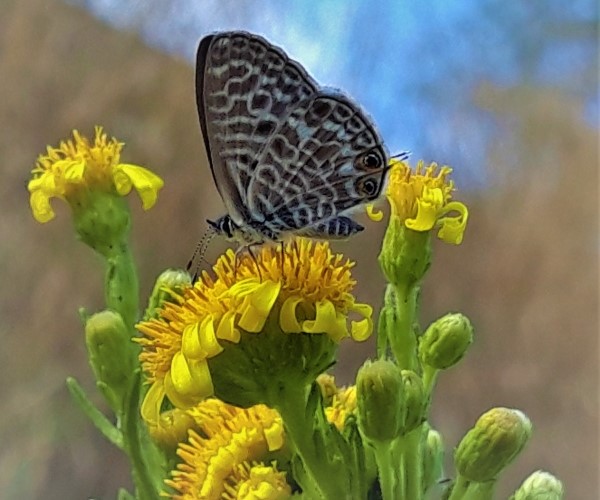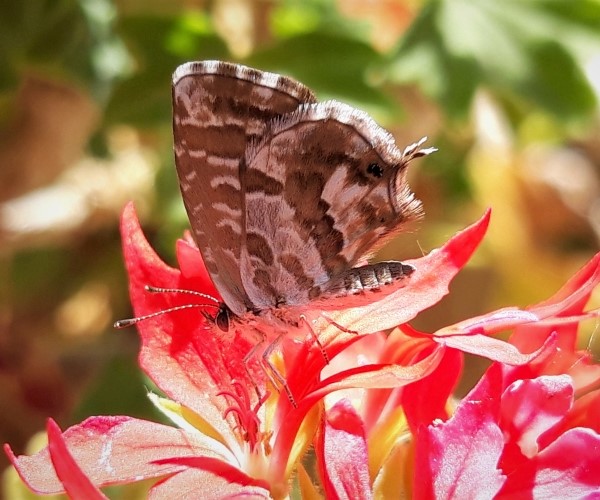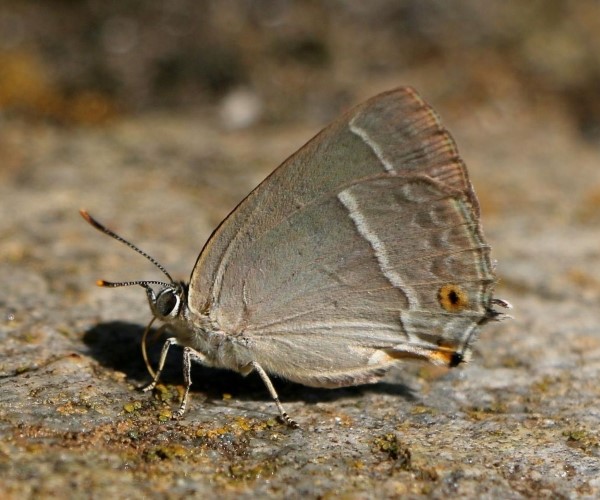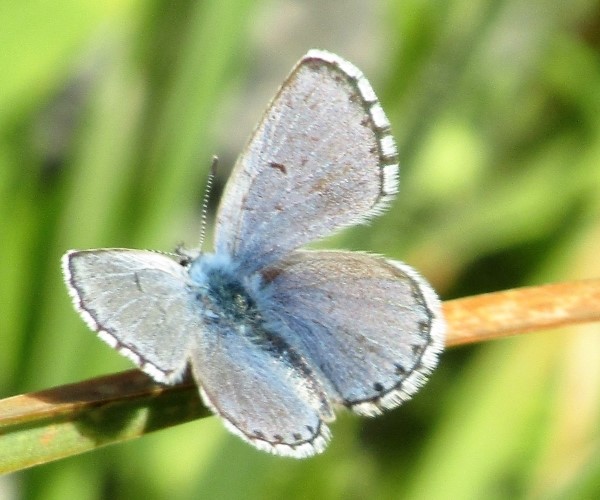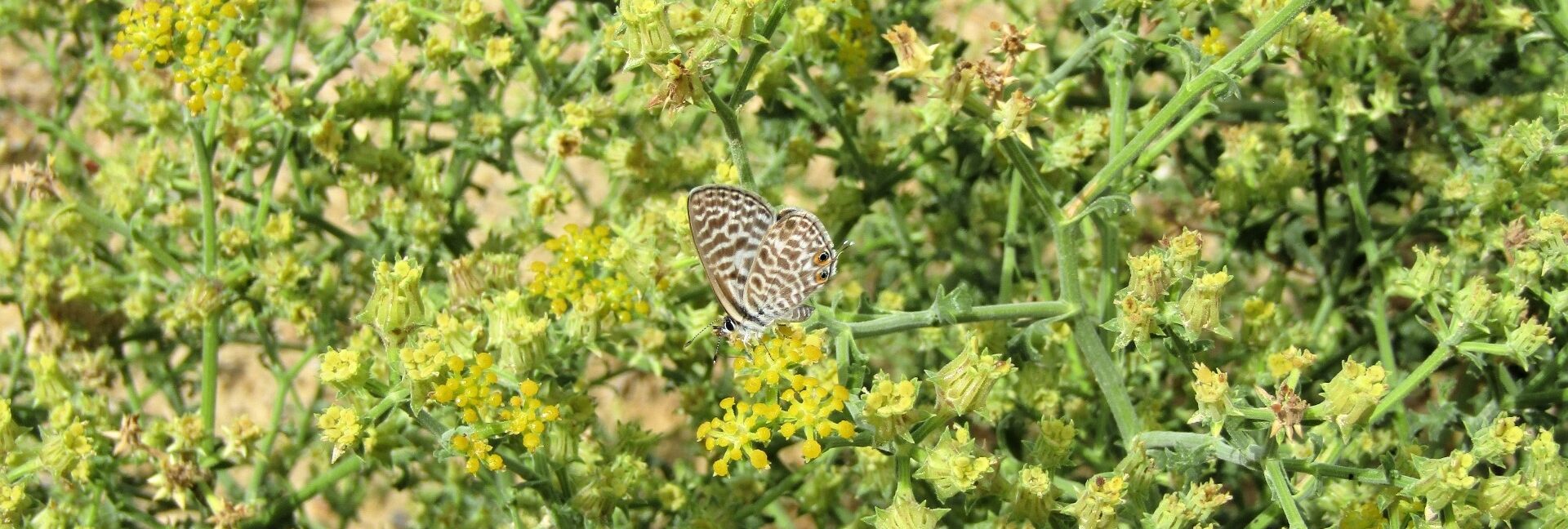
Leptotes pirithous, Crete - photo © K. Bormpoudaki
Leptotes pirithous
BUTTERFLY INFO
Leptotes pirithous is a butterfly of the family Lycaenidae on the island of Crete, Greece.
Scientific name
Leptotes pirithous (Linnaeus, 1767)
Common name
Lang’s Short-tailed Blue
Classification
Family: Lycaenidae > Subfamily: Polyommatinae > Tribus: Polyommatini > Genus: Leptotes
Wingspan
Male to female: 20-25 mm
Appearance
Behavior
It has a fast flight, low to the ground.
Habitat
Leptotes pirithous in Crete live in open land, wetlands, groups of trees with Fabaceae, dry riverbeds with ruderal vegetation, and agricultural land, seaside, and riverbanks.
Food plant
The polyphagous larva feeds on the leaves of various plants, including Fabaceae (Medicago sativa, Spartium junceum), Lythraceae, Labiatae, Plumbagineceae, Ericaceae (Erica manipuliflora), etc.
Flight period
The butterfly flies in at least 2 generations per year.
| Jan | Feb | Mar | Apr | May | Jun | Jul | Aug | Sep | Oct | Nov | Dec |
Remarks
Leptotes pirithous could be possibly confused with Lampides boeticus, but there are significant differences in fingerprint patterns on the underside of the wings. Additionally, Lampides boeticus is larger than Leptotes pirithous.
Status*
Least Concern (LC)
Leptotes pirithous Distribution Map

*based on http://www.pamperis.gr/THE_BUTTERFLIES_OF_GREECE/MAPS.html, updated Dec 2025 (ETRS89, grid 10X10 km)




